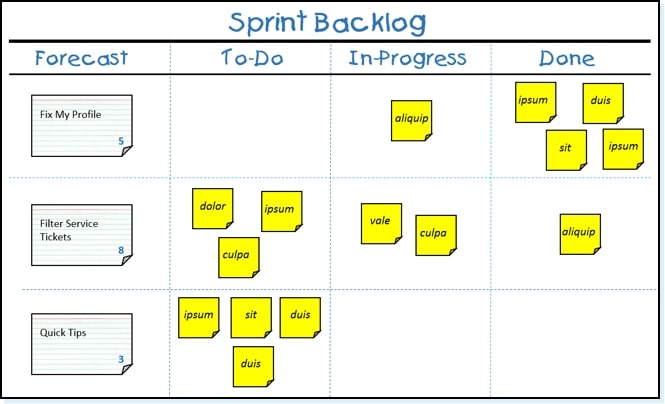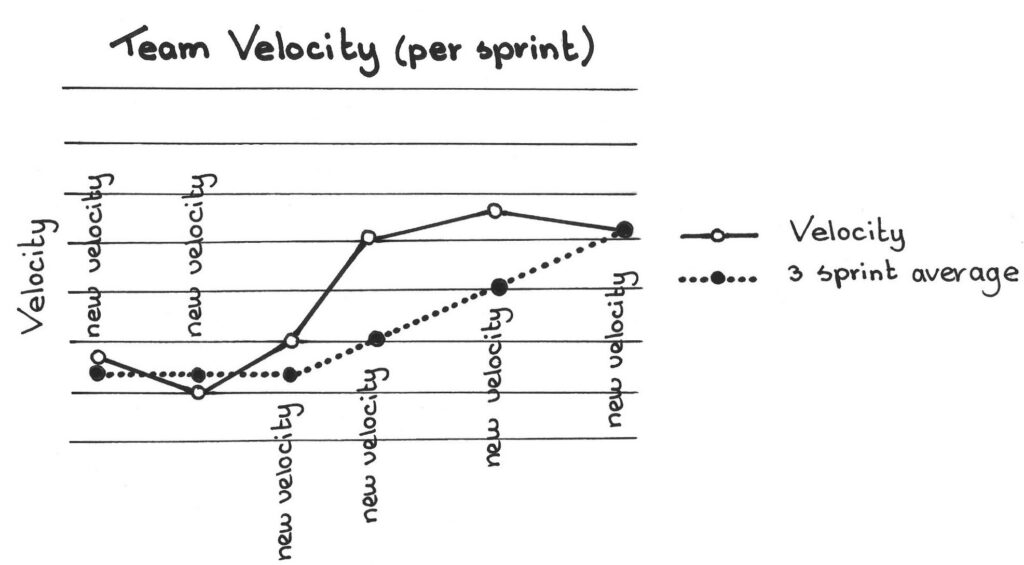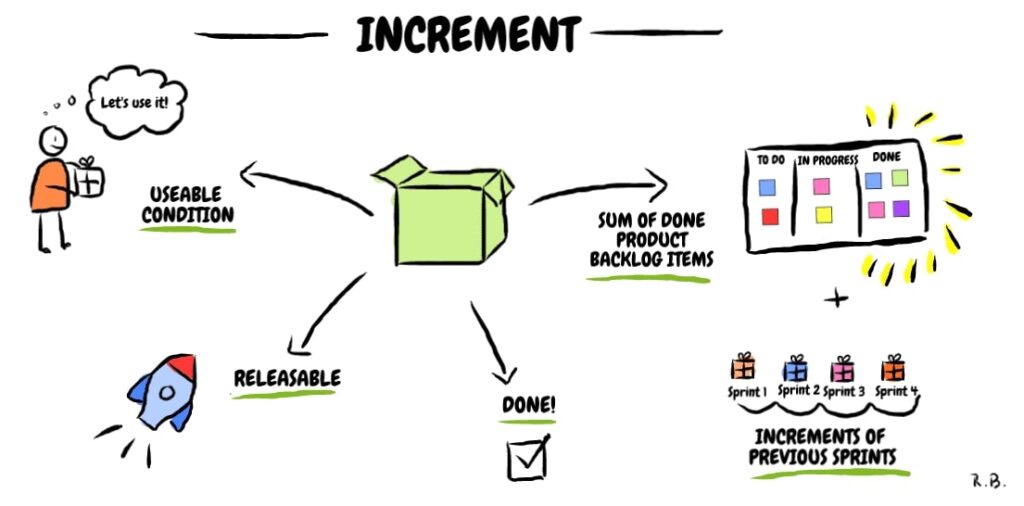In Agile software development, Sprint Planning is an important event that enables teams to finalize the sprint commitment in a realistic manner.
This article describes the fundamentals of sprint planning and provides a step-by-step guide on how to do it.
To learn more via video, watch below. Otherwise, skip ahead.
What is Sprint Planning?
In Scrum methodology, a sprint is a pre-defined period that lasts for one to four weeks in which the team executes the work they have planned to commit. A sprint kicks off with sprint planning, in which the team decides which goals they must accomplish during the sprint. Sprint planning helps the team to stay focused on the short-term goals that the team needs to accomplish to reach the end goal. Effective sprint planning is what makes the sprint successful and complete, but bad sprint planning makes the project fail at some point.

Credits: Digite
In each sprint planning meeting, the entire Scrum team gets to know the status of the projects and foresee roadblocks for sprint completion. There are several things a Scrum team does before and during a sprint planning meeting. The main input of the sprint planning is the product backlog. The product owners’ responsibility is to prepare the backlog items, and the development team’s responsibility is to provide a realistic estimation for the backlog items. The product owner and the team need proper communication and negotiation to finalize the sprint backlog. The planning output is the sprint goal described by the product owner.
How to Conduct Proper Sprint Planning
Sprint planning requires a lot of preparation work by both the product owner and the Scrum team. It begins with creating the sprint backlog that contains items or user stories the team needs to work on.
Prepare the Sprint Backlog
The sprint backlog consists of a comprehensive set of user stories. However, the backlog does not have to be complete because of the changing customer and product requirements. The product owner is the one who is responsible for maintaining the sprint backlog with the most up-to-date changes. Before the start of the meeting, they must prepare themselves to provide the sprint goal, feedback, and clarifications.
Backlog Refinement
The product owner has the option to conduct the backlog refinement during the sprint grooming meeting. The backlog refinement meeting happens in the middle of the sprint execution.

Credits: Scrum.org
The product owner syncs up with the team to provide input on what needs to come next, or the team presents a selection of items they have decided to work on in the next sprint. This helps the product owner make the sprint backlog ready with the required user stories defining all the information like the acceptance criteria, story points, priority, etc. Then the team reviews this backlog during the sprint planning and adjusts the plan with the rest of any remaining work from the current sprint.
Refine the Estimations
While the estimations for the user stories happen before the release planning, the development team has the chance to revisit the estimations based on their experience so far and provide a more realistic estimation. When the team gets mature with the work, it is easy to provide accurate estimations. These estimations are important to finalize the tasks for the sprint.
Define the Team’s Capacity
The team members are not always available within the sprint due to various reasons like planned vacations, holidays, and allocation to other projects. Therefore, you must know the team’s capacity before committing to the sprint backlog. If there are any time constraints, consider talking with managers to allocate the time from other resources. That way, you get them to commit to the mandatory work without any hindrance.

Credits: Scrumbook
Also, before the sprint planning begins, set the team velocity, which defines how much work the team must complete within one sprint. This velocity stems from considering several factors like the prior sprint experience, the number of backlog items, and team deliverables.
In addition, you must consider the impact of dependencies within each user story and outside dependencies. It is best to avoid planning stories dependent on each other because it underutilizes the resources for some time until the others complete the dependent work.
Plan the Sprint Planning Meeting
While the team is doing all the prior work, it is the Scrum Master’s responsibility to plan the sprint planning session. The planning meeting must happen in an allocated time at the end of each sprint, along with the sprint review. The Scrum Master must sync up with the team and discuss if there are any special things to discuss that must give the higher priority at the meeting, any other people that must participate, and so on. This groundwork helps the Scrum Master run an effective and productive planning meeting that generates a robust sprint plan.
The length of the sprint planning meeting is also an important thing the team must first determine. In general, the number of hours the team must spend on the planning depends on the sprint length. For example, if the sprint spans two weeks, this meeting lasts for four hours or more. However, this is not a static period sometimes; the meeting drags on for more hours or finishes earlier than normal. In scenarios where the planning drags for more than the allotted time, split the meeting into two parts and hold it on two consecutive days. In addition, you must consider the availability of key stakeholders when allocating a fixed time for the meeting.
Execute the Sprint Planning Meeting
Once the preparations are ready, and the team has identified all the user stories and tasks to undertake, it is time to hold the sprint planning meeting. The Scrum Master leads the planning meeting. The team lead presents the sprint plan and the rationale behind each selection. Then the product owners provide their feedback where necessary. The entire team has the opportunity to discuss any clarifications they require from the product owners and other stakeholders during the planning session.

Credits: Let’s Scrum It
After completing the sprint planning session, the team has a solid plan in hand for the upcoming sprint where they start working straight away. Effective sprint planning in a software development environment leads to delivering shippable products to the market at the end of each sprint.
